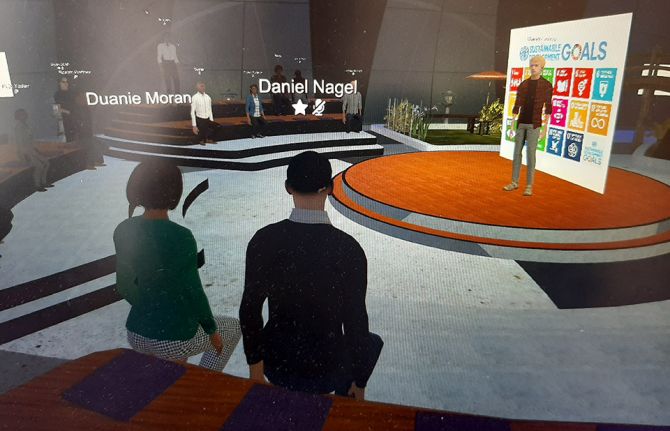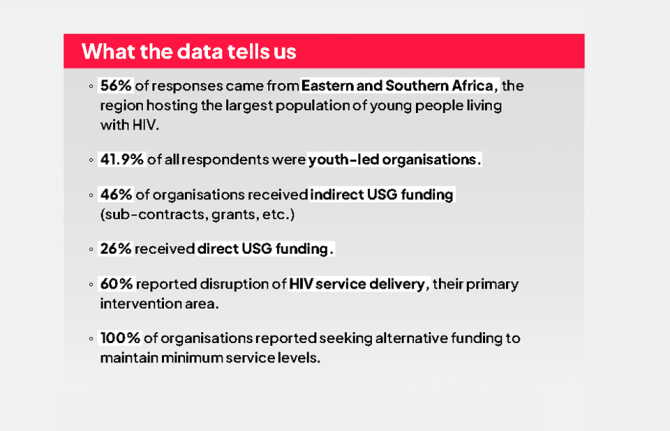

Feature Story
Young people discuss innovations to reduce health inequalities
01 October 2020
01 October 2020 01 October 2020A virtual event held on the sidelines of the United Nations General Assembly used virtual reality and extended reality technology to connect the young delegates of YOUNGA—a youth forum initiative of the Office of the United Nations Secretary-General—with influential decision-makers and industry leaders. The discussion and the following interactive question-and-answer session on global challenges and how to create solutions for a more inclusive and sustainable world used three-dimensional avatars of each panellist and participant.
On the event’s panel were Tanaka Chirombo, representing the Global Network of Young People Living with HIV, Daniel Nagel, representing Youth Against AIDS, Dilnaz Kamalova, the co-creator of Sequence, an application that helps to monitor a person’s daily intake of medicines, and Praddep Kakkattil, the Director of Innovations at UNAIDS.
Social, technological and scientific innovations, from new medicines and testing tools to innovative community-led approaches, have been a crucial aspect of the HIV response since the beginning. As we are transitioning to a more virtual world, technologies such as applications, video games, social media platforms and new community-led approaches will be important to bridge the gap between people and HIV services, especially for hard-to-reach populations.
Convened by UNAIDS, the event showcased examples of social and technological innovations led by young people, saw a discussion on how to ensure that the voices of young people and innovative approaches led by young people are central in the next global AIDS strategy and sought to identify the critical factors for scaling up proven health innovations for all young people in need.
Community innovations have always been critical to the AIDS response, as they show the resilience and leadership of communities affected by HIV. Mr Chirombo highlighted how local networks of young people living with HIV have played a key role in improving service provision through the roll-out of innovative peer-support services and youth-led monitoring to assess HIV services. “Young people need to get involved and take the lead to see changes on the ground,” he said.
The importance of collaboration between networks of young people to leverage access to political space and resources for innovations was spoken about throughout the event. “We need to overcome silos, listen to each other and be open to new ideas and partnerships,” said Mr Nagel.
“We need to believe in the ideas we are developing and understand that adolescents and youth can make an impact and change the world,” said Ms Kamalova, who is also a Youth Ambassador for the United Nations Children’s Fund.
Mr Kakkattil spoke about how the AIDS response has been driven by innovations since its early years and about the power of activism to demand the scale-up of scientific and social innovations. “The Health Innovation Exchange, founded by the UNAIDS Secretariat, is a good example of how we can make efforts to connect communities, innovators, developers and investors to improve access to health,” he said.
The event, Youth-Led and Youth-Centered Health Innovations to Reduce Inequalities, was moderated by Gareth Jones, the Vice-Chair of the PACT.
Related
 “Who will protect our young people?”
“Who will protect our young people?”

02 June 2025


